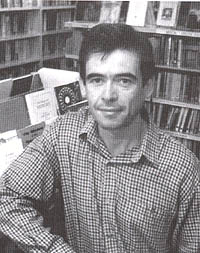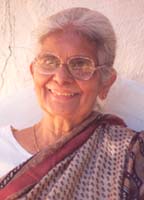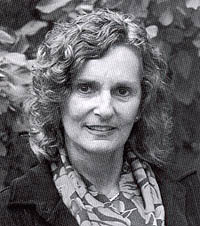By Michael English
Originally printed in the July - August 2006 issue of Quest magazine.
Citation: English, Michael. "Music of the Spheres: Our Relationship with the Anonymous Dead." Quest 94.4 (JULY-AUGUST 2006):145-149.

The Music of the Spheres is an ancient Pythagorean concept, wherein Pythagoras was fascinated by the harmonics of a vibrating string on a Greek instrument-the lyre. He discovered an amazing correspondence between the order of musical intervals and the spacing of planets. For Pythagoras, there appeared to be a direct mathematical relationship between music's vibrational frequency and the corresponding position of planetary bodies; it seemed that the order of notes on vibrating strings were, somehow, an intrinsic property of the whole universe.
Interestingly, modern physics is now revisiting the concept of vibrational string harmonics as a much sought-after TOE-Theory of Everything. That may be considered as a grandiose claim unless taken in context, which I will qualify shortly. However, modern string theory asserts that, sub-atomically, all physical reality is made from the relationship between one phenomenon-tiny vibrating strings of energy'and the differing properties at this smallest of scales is due to the differing vibrational patterns the strings can perform. Brian Greene states, "far from being a collection of chaotic experimental facts, particle properties in string theory are the manifestation of one and the same physical feature: the resonant patterns of vibration'the music, so to speak'of fundamental loops of string" (Greene 15-16).
This becomes interesting from a metaphysical and theosophical perspective, due to some amazing conceptual correspondences between modern string theory and investigative research done in the early twentieth century by Annie Besant and Charles Leadbeater. Yet, just as metaphysics postulates inner dimensions of being, string theory, too, relies on extra, hidden dimensions that may be equally real as the reality we experience here.
Exploring the re-emergence of the Pythagorean harmonics as a modern description of the basic structure of our Universe, and its metaphysical relevance, is worthwhile, especially considering the prophetic words of Madame Blavatsky: "'the hidden meaning of Apollo's HEPTACHORD'the lyre of the radiant god'whose shell only has now fallen into the hands of Modern Science '" (Blavatsky 167).
First, let's clarify the scientific concept of a TOE. Theoretical physics is often considered the essential science because, from a reductionist perspective'peeling away the external layers to find the most elementary constituent in nature'it deals with what are considered the basic building blocks and the glue that sticks them together. Everything is supposedly derivative from this level.
Knowing the elementary particles and the forces that operate between them, you should be able to understand how they combine to form atoms, molecules, and on to complex organisms. But theoretical physics has become bound within a self-referencing paradigm due to another principle, the doctrine of materialism. As Rupert Sheldrake indicates: "materialism starts from the assumption that only matter is real; hence everything that exists is either matter or entirely dependent on matter for its existence" (Sheldrake, 202).
Guided by the materialist doctrine, physics has advanced by leaps and bounds, discovering that everything is made of atoms, which are made of subatomic particles, and certain forces, operating between these fundamental particles, either stick them together or move them apart. It seemed only some fine details were required to put this together as a complete description of everything, or TOE. But here's the qualification'materialism only leads towards a complete theory of all possible physical interactions; it doesn't necessarily explain "everything."
For example, everything in this physical existence is made of energy, but what is energy and where does it come from? Materialism doesn't know; it appears from the Big Bang and then we only know it by the properties it conveys when it interacts: mass, charge and spin.
Or, at a different level: How do we explain the emergence of consciousness? Materialists can't adequately answer this, because they look at dead matter as the basis of consciousness, not as in metaphysics where consciousness is the basis of consciousness. The TOE physicists are working towards is a theory that accounts for all energetic, and therefore, they argue, all physical interactions. But this creates a "hermetic paradigm," wherein the outcome of the theory must, in some way, correspond with matter. Therefore, when physicists say a TOE, we should realize that there are definite limitations. (However, I applaud its description of physical nature.)
That said, let's delve deeper:
Pythagoras seems to have been so fascinated with the mystical abstraction of numbers that he experimented mathematically with the harmonics of the vibrating string and became impressed with the remarkable similarity between musical intervals and the spacing of the planets' (sub-atomically 67).
Or from the post-modern scientific perspective:
. . . since the Pythagoreans taught that the order of notes of a vibrating string pervades the whole universe, they would have been moved to learn, two thousand years later, of the work of Nambu, who was able to show that the hadrons, or strongly interacting particles, are also quantum manifestations of this Pythagorean ideal (Peat 53).
The question arises: Why are physicists exploring the idea that fundamental particles, such as hadrons (or photons, electrons, etc.) are vibrating strings? Isn't there already a suitable theory? This goes to the heart of a problem that's dogged physics for decades now. Yes, there is a very precise theory for the small-scale universe-quantum theory-and an incredibly precise theory for the large-scale universe'Einstein's general relativity. Yet, the enduring problem has been that these two theories have resisted all attempts to unify them into one description, negating any TOE. For a greater appreciation of why these two theories remain mutually exclusive, I'll outline each, to show how string theory resolves the problem.
In the early twentieth century, physicists discovered all matter was not made from solid billiard-ball atoms; rather, these atoms are actually composites'basically, a cloud of electrons orbiting a central dense nucleus. Later, they realized the central nucleus is not solid either, but made of even smaller parts'protons and neutrons'which in turn, are made of yet smaller components'quarks.
Really, at this most fundamental level, we should stop thinking of these so-called "particles" as being made of matter; they are fluctuating amounts of energy that display certain well defined properties; that's basically what "quantum" means. In fact, the current way of thinking about the elusive quantum is as an energetic excitation of its underlying field.
For example, the quantum known as a photon, or particle of light, is a vibrating excitation of the all-pervasive electromagnetic field. To make matters even more difficult, these quanta live in a world of their own which does not follow the rules of our classical world. They perform what seem impossible feats; including fluctuating in and out of existence, being in two places at once, and there's a quantifiable level of uncertainty in the quantum world.
Uncertainty is an inherent part of the quantum world. Because quanta are, in principle, incessantly energetic, it's impossible to know in the same moment, both the position and momentum of a quantum particle; the more you know the position, the less you know the momentum, and vice versa. Quantum physicists resolve this by dealing in a very precise way with the probabilities of where the particles might be.
If this all sounds a bit bizarre'well, it is. But quantum theory has been pursued due to its successes, and is the basis of all electronic equipment. Thus, as Greene indicates:
By 1928 or so, many of the mathematical formulas and rules of quantum mechanics had been put in place and, ever since, it has been used to make the most precise and successful numerical predictions in the history of science (Greene 87).
So, even though physicists themselves often refer to quantum theory as weird or bizarre, it has been relied on for an understanding of the microscopic world we can never see. In its mathematical formulation, quantum theory treats particles as dimensionless points; idealized points of no size, but being assigned certain values and properties. However, these rules don't apply to the macroscopic world. In the macroscopic world, we know where things are without any uncertainty (except car keys and teenage children), and at this, scale physicists rely on Einstein's general relativity.
General relativity deals with the nature of space, time (as a four-dimensional continuum known as spacetime) and gravity. In simple terms'the presence of mass/matter/energy causes the spacetime fabric to curve, just like the mass of a bowling ball on a trampoline mat would cause that mat to curve. So for Einstein, gravity is not an attractive force, rather, it's the geometrical curvature of the spacetime fabric that causes spatial bodies to follow certain orbits. General relativity is so precise that, as Einstein predicted, even light would follow the spacetime curvature, and this was one of the first experiments performed to verify its accuracy.
General relativity sees spacetime as a smooth, continuous medium from one point to the next without any fluctuations. This presents the nub of the problem for physicists:
General relativity is a theory about the structure of space-time, curved geometry being determined by the amount of energy and matter present. But matter and energy are quantum mechanical in nature, so a complete account of space-time geometry cannot ignore the quantum nature of the matter and energy which creates its very form (Peat 17-18).
Thus, if quantum theory treats particles as transient fluctuating excitations of the field, but general relativity says the spacetime field is a smooth continuum, we see the crux of the problem. General relativity cannot account for these microscopic fluctuations in its formulation; and the fluctuations of the subatomic world do not appear in our macroscopic reality. This becomes an intractable problem if we imagine magnifying in on a region of space; as we reach the microscopic size of the quantum world, we encounter a wildly fluctuating "quantum foam" which defies general relativity. And this is why string theory is such a revelation. Rather than elementary particles being dimensionless points, in string theory they do have dimension, albeit incredibly small, at about the level where the uncertainty principle kicks in.
In string theory, the basic idea describes quanta as little loops of energetic string. So, if we could magnify a quantum particle, such as an electron, to an observable size, rather than being a point of energy, it would be a loop of energy, or vibrating string. Just as the string on a musical instrument, whether a lyre, heptachord, or violin can carry a certain vibrational frequency depending on its length, the microscopic strings have specific resonant frequencies. It is the frequency pattern that is then interpreted as the various particles that make up the real world (that is, real to us).
String theory took a while to gain momentum, because other critical developments had not been made at that time. One was the idea that there are many more spacetime dimensions than the three of space and one of time apparent to us! In string theory, the strings can be "open" like a small piece of thread, or "closed" like an elastic band, flat like a Frisbee, or assume even more complicated shapes, generically referred to as "branes." This alone could account for many, though not all, particles in the quantum world. However, if these various string shapes and other bits are assumed to move through extra, hidden spatial dimensions, then we can account for all the quantum particles of nature, both those that carry force (bosons) and the ones that act as matter (fermions).
As it turns out, the best description of nature, as we know it, could be derived from 10 spacetime dimensions, with 6 of them having curled up so tightly at the beginning of the universe that they're not apparent to our senses. As Michio Kaku states: ". . . and when strings move in 10-dimensional space-time, they warp the space-time surrounding them in precisely the way predicted by general relativity. So strings simply and elegantly unify the quantum theory of particles and general relativity (New Scientist 32-36).
Unfortunately, here we hit another snag: five competing string theories emerged out of this new paradigm; obviously about four too many, if we want one unified description of nature, or TOE. This is where the most acclaimed move in string theory was made. If the strings and other shapes are moving about in their 10-dimensional framework, but also wrapped around a tightly bound eleventh dimension, then specific relationships among the various string theories emerge; so called "dualities," or ways of linking the theories together. While difficult to grasp without going into a lengthy description, basically these dualities show that the nature of spaces smaller than that of the quantum uncertainty level are equivalent to our large spatial dimensions. Or as one of the key contributors to string theory says: "according to T-duality, universes with small scale factors are equivalent to ones with large scale factors" (Veneziano 37). Put another way, the five string theories turn out to be loose approximations of a superior theory, rather blandly named M-theory.
To summarize before launching into the metaphysics: string theory, or M-theory, unites general relativity and quantum theory by saying that at the elementary level, tiny strings and branes of energy vibrate around and through extra, hidden dimensions. The extra dimensions can only be curled up in very specific ways, but end up looking like bundles of twisted shapes. The way strings wind and vibrate about the multi-dimensional space gives rise to what we perceive as different particles, like electrons, quarks, photons, etc. and their properties. A way of thinking of this is like the way different musical notes are produced through a saxophone by pressing valves which modify the space through which the wind or energy passes; the shape of the inner dimensions gives rise to the outer vibration.
It is very interesting to compare this to the clairvoyant work of Besant and Leadbeater from their 1909 theosophical classic, Occult Chemistry. Almost a hundred years ago, they researched the most elementary level of physical nature, not with electron microscopes or particle accelerators as we do today, but with the power of the mind. They used special psychic techniques, they'd been trained in, to focus the inner vision of their minds in on the smallest scales of the physical world. (There are serious dangers to advancing psychic abilities prematurely, so don't try this at home.)
So what did they find this world is made of at the smallest scale of physical reality? Tiny bundles of twisted string-like shapes! In his work Anima, Stephen Phillips, depicts their "Ultimate Physical Atom" (UPA), or the most elementary constituent of physical reality. Very few physicists have bothered looking at their work, but in doing so, Phillips realized they were actually viewing subatomic particles, or in our new understandings, the superstrings of string theory. And amazingly, their UPA is like a bundle of string that winds and vibrates as it spins on its axis and is wrapped around an inner cylindrical dimension. Here are all the elements of string theory, but Besant and Leadbeater proposed this at the beginning of the twentieth century.
The important features of string theory involve spin, charge, ten dimensions around a cylindrical eleventh, winding capacities and vibrational patterns. The UPA has similar features, like ten string-like bands that wind around an inner cylindrical dimension; it also has charge, spin and it vibrates-all fascinating correlations and, at least conceptually, the same.
However, in metaphysics, the UPA is only the elementary level of the densest plane/field of being'the physical. There are other subtle levels beyond the physical fields; other dimensions of being, where our Soul, or individualized consciousness, remains as a continuum in the after-death state, and this is the reason that the bulk of humanity has always intuited some form of after-life (such as heaven, nirvana, and so on.)
In metaphysics, these physical fields, which are the focus of our senses, have crystallized out higher vibrational fields or the extra, hidden dimensions. The nature and properties of some of those higher fields is that of mental properties, thus our consciousness can survive the inner dimensions, but our physical body cannot. As Madame Blavatsky states: "Being is an endless cycle within the one absolute eternity, wherein move numberless inner cycles finite and conditioned" (Blavatsky 221, emphasis added).
This concept involves one of the major principles in metaphysics and probably the most important paradigm shift for our understanding of human nature. In Eastern metaphysics, rather than our consciousness dying or stagnating in an "after-life," we are (or more correctly, our consciousness is) a reincarnating entity in its own right; one which focuses that consciousness into the physical world for a life-period by connecting with a suitably complex brain and body. Then, before withdrawing consciousness at death of the physical body and withdrawing to the hidden inner dimensions (the "inner being"), it assimilates earthly experiences before being karmically, or magnetically, drawn back to the physical fields; the Buddhist "samsara," or wheel of birth and death, from which Gautama Buddha released himself.
This is a whole new science, involving the processes of psycho-magnetism rather than electromagnetism, and a metaphysical understanding of the inner dimensions. So, does string theory, or M-theory, in any way support this axiom of metaphysics? Is it possible that there are "inner dimensions" where consciousness descends, or emerges from and returns to?
Perhaps the post-modern M-theory is just on the cusp of uncovering this. Consider these fascinating comments from one of the leaders in this field, Michael J. Duff who, in his article "The Theory Formerly Known as Strings," states:
We have always supposed that the laws of nature break down at smaller distances. What T-duality suggests, however, is at these scales, the universe looks just the same as it does at large scales. One may even imagine that if the universe were to shrink to less than the Planck length [minimum meaningful length in quantum theory], it would transform into a dual universe that grows bigger as the original one collapses. (15)
It may take centuries for our understandings to evolve to the metaphysical view of our consciousness as a continuum that can be liberated from its subtle magnetic attraction to matter (as at death) and shift its focus to other inner dimensions. But perhaps theoretical physics has just begun to discover the science of how this could be.
I particularly like Blavatsky's quote with respect to this concept:
Maya or illusion is an element which enters into all finite things, for everything that exists has only a relative, not an absolute reality'Whatever plane our consciousness may be acting in, both we and the things belonging to that plane are, for the time being, our only realities. (39-40)
Finally, I wonder if the discovery of microscopic string harmonics was what Blavatsky was alluding to when stating:
Do not attempt to unveil the secret of being and non-being to those unable to see the hidden meaning of Apollo's HEPTACHORD-the lyre of the radiant god, in each of the seven strings of which dwelleth the Spirit, Soul and Astral body of the Kosmos, whose shell only has now fallen into the hands of Modern Science ' (167)
References:
Blavatsky, Helena P. The Secret Doctrine, 7th ed. vol. 1. Adyar: Theosophical Publishing House, 1979.
Greene, Brian. The Elegant Universe. London: Jonathan Cape, 1999.
Duff, Michael J. "The Theory Formerly Known As Strings." Scientific American, vol.13:1, 2003.
Kaku, Michio. New Scientist, January 18, 1997 [PF: Contact author.We need name of article here]
Smith, E. Lester (Ed.) Intelligence Came First. Wheaton, IL: Theosophical Publishing House, 1990.
Murchie, Guy. The Music of the Spheres: The Material Universe from Atom to Quasars, Simply Explained. Mineola, NY: Dover Publications, 1967.
Phillips, Stephen M. Anima: Evidence of a Yogic Siddhi. Adyar: Theosophical Publishing House, 1996.
Peat, David, F. Superstrings and the Search For the Theory of Everything. Chicago,IL: Contemporary Books, 1988.
Sheldrake, Rupert. A New Science of Life. Rochester, NY: Park Street Press, 1995.
Veneziano, G. "The Myth of the Beginning of Time." Scientific American, vol. 290:5, 2004.





